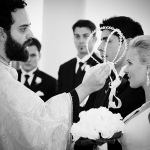
Deprecated: trim(): Passing null to parameter #1 ($string) of type string is deprecated in /home/aoiusa/public_html/wp-content/plugins/sexybookmarks/public.php on line 388
Deprecated: trim(): Passing null to parameter #1 ($string) of type string is deprecated in /home/aoiusa/public_html/wp-content/plugins/sexybookmarks/public.php on line 394
Deprecated: trim(): Passing null to parameter #1 ($string) of type string is deprecated in /home/aoiusa/public_html/wp-content/plugins/sexybookmarks/public.php on line 400
 Source: Ruth Institute Blog | HT: Koinonia
Source: Ruth Institute Blog | HT: Koinonia
Submitted by regular Ruth blog reader, Leo
Culture is not the same as the law. We do ourselves a disservice if we think exclusively about the law. Law, morality, culture, religion, and custom are all related, but are not identical. The law is more powerful in that it can enforce compliance with its dictates. Culture, however, can influence the law and can strongly influence behavior in ways the law cannot. The official government marriage ceremony under the despised Communist government in Poland did not have the moral force of the culturally prized religious ceremony. The laws governing marriage become meaningless if no one behaviorally enters or culturally endorses the institution.
Strong marriage cultures have certain elements in common. That they do so is not accidental, but the result of evolutionary pressures. Weak cultures disappear. Sturdy and stalwart cultures endure and survive. Vigorous and life-giving cultures prosper and thrive. In strong marriage cultures, marriage has the following characteristics. This list is not claimed to be exhaustive or to be in any particular order, but it is characteristic of robust marriage cultures and would be recognized as such whether in Qufu, Lumbini, Varanasi, Isfahan, Axum, Cairo, Jerusalem, Rome, Geneva, Salt Lake City, Quito, or Peoria both now and as far back in history as those very diverse cities go.
Marriage is important. It is considered foundational and given sustaining cultural, moral, and religious sanction, and most eligible adults are expected to enter into marriage.
Marriage is expected to have a high degree of permanence. It is considered a life-time implied contract whose breach or dissolution is discouraged and treated seriously if and when it does occur.
Marriage is heterosexual. In all the varieties of marriage customs, this is amazingly constant. The two different genders bring different expectation to and fulfill different roles in the marriage, based not only on custom but also on inherent differences that spring from gender.
Marriage is life generating. Marriages are open to and supportive of fertility, and marriage is the sanctioned environment for child bearing and considered the ideal environment for the subsequent rearing of those children. Large families are encouraged and considered a blessing.
Marriage is sexually exclusive. Sexual fidelity is highly valued, and sex outside of the marriage is strongly discouraged. In the West and in China and most of the world this exclusivity includes monogamy.
Marriage is sexually restraining. Fertility is not prized at all costs and is restrained by propriety. Marriage is considered the only licit or appropriate setting for sexual activities, and standards of decorum and modesty naturally follow.
Marriage includes obligations and expectations of mutual support and the creation and maintenance of an emotional, intellectual, physical, and spiritual bond both between husbands and wives.
Marriage creates obligations between parents and their children, including expectations by children of emotional, physical, spiritual, and educational support from their parents, and parental expectations of filial piety. The family is considered the appropriate setting for the teaching of virtue and passing those virtues to the next generation.
Marriage includes reciprocal support for asymmetric functions. Men are expected to support their wives in the burdens of pregnancy and child bearing, burdens which only women can assume. Obligations of parents to children and children to parents are likewise asymmetric and reciprocal.
Marriage creates an intergenerational link and creates extended families and lineages. A marriage not only joins two people, it joins two extended families. It defines or creates not only husbands and wives and their children, but in-laws, uncles, aunts, nephews, nieces, cousins, grandparents, and grandchildren.
Marriages and the extended families and clans resulting therefrom form the basis of the larger society. The family becomes an organizational unit of society, defining inheritance and household economic activity. The society is, in turn, expected to support and respect the rights of the family.
These characteristics are interrelated and mutually reinforcing. They are operative and functional as well as being cultural and historical.
The casual reader will notice immediately that some of these characteristics represent an ideal which is not always realized, that there are variations at the margins to all of these characteristics, and that deviations from this ideal are increasingly common in contemporary society. All this may be true, but though the recitation of these characteristics may seem dry in a dispassionate setting, the ideal they represent has immense sustaining power both for individuals and for society. Regardless of what legal battles may be won or lost, the cultural battle may be more important. History tells us that society that trades a strong culture of marriage for a weak or sterile one will ultimately disappear and be replaced by a successor culture that retains the vitality of its marriage culture.